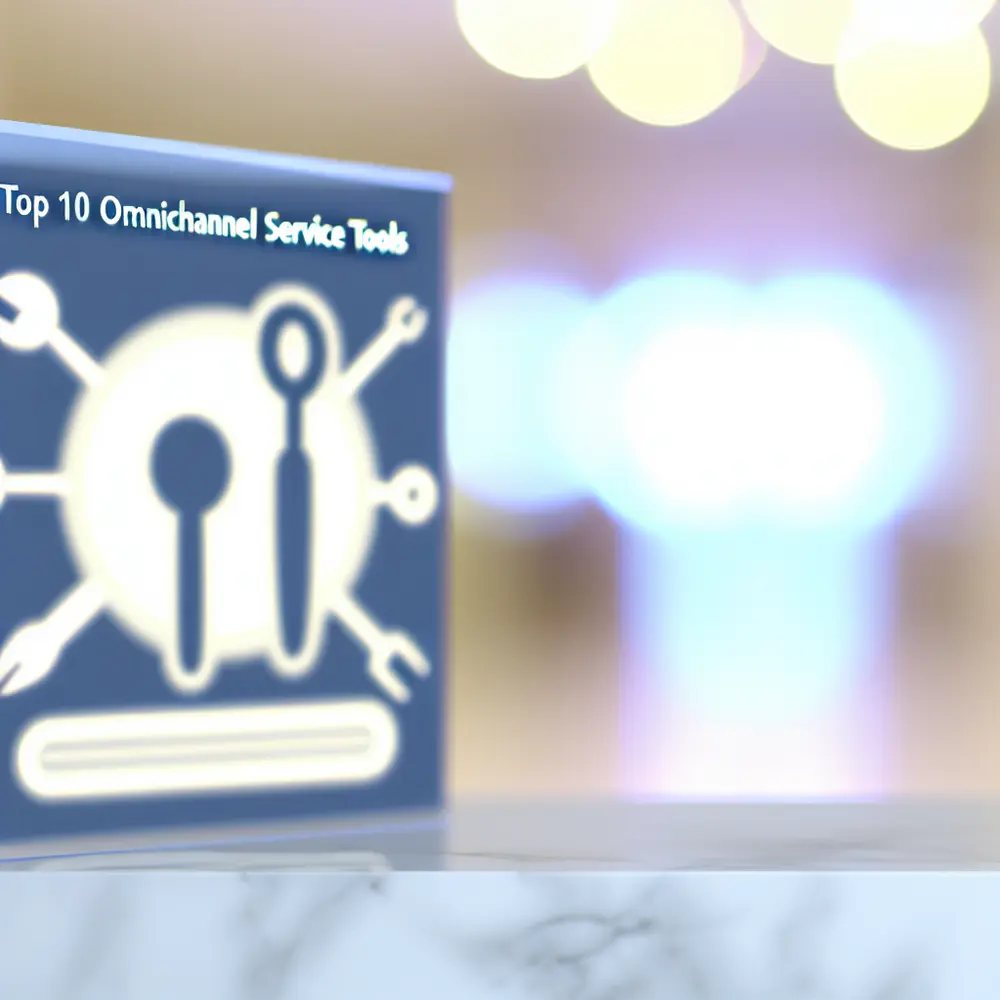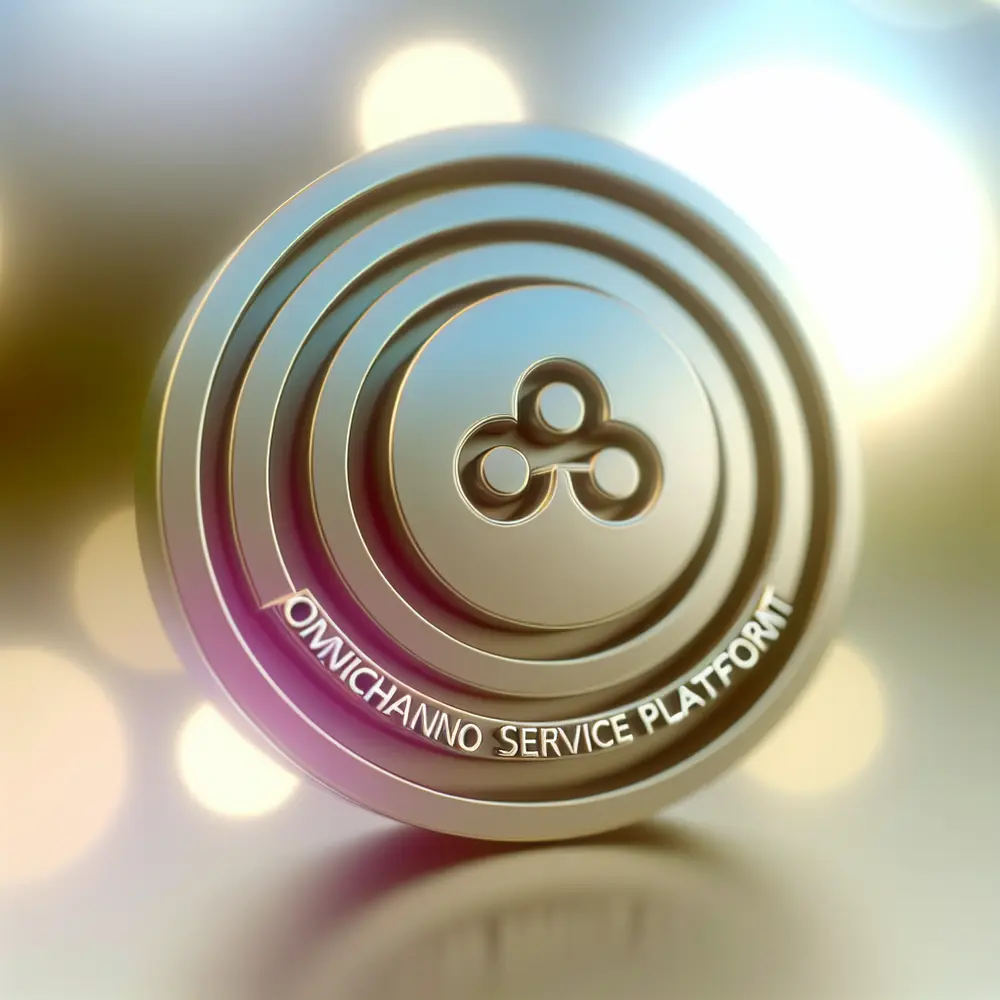In today’s fast-paced marketplace, the consumer journey has transformed dramatically. Shoppers now expect brands to deliver seamless experiences across various touchpoints, from online platforms to in-store visits. This shift in consumer behavior emphasizes the need for a strategic approach to customer engagement. Enter the omnichannel strategy—a solution that not only meets these evolving expectations but also empowers businesses to foster deeper relationships with their customers. As you read on, discover how adopting an omnichannel approach can revolutionize your business and enhance customer satisfaction.
But what exactly does it take to implement an effective omnichannel strategy? It involves more than just connecting various sales channels; it requires a comprehensive understanding of customer behavior and the technology to facilitate meaningful interactions. This article will explore the fundamental principles of omnichannel engagement, the tools needed for success, and how to avoid common pitfalls that may arise during implementation. By gaining insights into these areas, you can ensure your business not only survives but thrives in this competitive landscape.
As the lines between digital and physical shopping continue to blur, it’s vital for businesses—especially small and medium enterprises—to recognize the impact of omnichannel strategies. You’ll learn not only about the benefits they bring, such as improved customer insights and operational efficiency, but also how to choose the right tools and resources. Ready to delve into the world of omnichannel and unlock its potential for your business? Let’s explore the journey ahead.
Understanding Omnichannel Engagement
Omnichannel is a customer engagement strategy that integrates multiple channels to provide a seamless and cohesive experience throughout the customer journey. In today’s competitive landscape, businesses must recognize that customers interact with various touchpoints, from social media and websites to emails and physical stores. To succeed, companies must unify these channels, ensuring that messages, offers, and customer interactions are consistent, regardless of the medium.
The foundation of effective omnichannel engagement lies in the understanding of customer behavior. Businesses should analyze how customers transition between different channels and tailor their approaches accordingly. For instance, a consumer may start their journey by researching products online, then shift to social media for reviews, and finally make a purchase in a physical store. Recognizing these behaviors enables businesses to create targeted marketing strategies that align with the customer’s unique path.
Implementing an omnichannel strategy can significantly enhance customer satisfaction. By offering a seamless transition between channels, businesses can eliminate frustration, such as having to repeat information to different representatives or encountering inconsistent pricing. When customers experience a harmonious interplay across platforms, they are more likely to develop loyalty and advocate for the brand.
This kind of cohesive interaction fosters trust, reinforcing a positive relationship between customer and business. By acknowledging the need for an omnichannel approach, companies position themselves to not only meet but exceed customer expectations, thereby creating a competitive advantage in an increasingly crowded market.
The Role of Technology in Omnichannel Success
The role of technology in facilitating an omnichannel approach cannot be underestimated. Tools like CRM systems, customer data platforms, and integrated analytics solutions allow businesses to gather and analyze customer data from various sources. This data provides invaluable insights that inform personalized marketing tactics and customer service interactions. As small and medium businesses invest in these technologies, they can compete more effectively with larger enterprises, providing exceptional experiences that drive sales and customer retention.
One of the critical components of successful omnichannel service is the ability to track customer interactions across all platforms. This involves using comprehensive systems that centralize customer data and interactions, allowing businesses to understand preferences and behaviors in real time. Such insights enable tailored engagement strategies that resonate with customers, making their experiences more meaningful and effective.
Additionally, leveraging tools like chatbots and AI can facilitate immediate responses to customer inquiries, enhancing overall satisfaction. Automation can help businesses streamline operations, reduce wait times, and provide a level of service that competes with larger companies. Therefore, investing in modern technology not only supports current needs but also prepares the business for future growth.
Moreover, as businesses embrace an omnichannel approach, they must also prioritize robust analytics. This allows them to measure the effectiveness of their strategies across different channels, enabling informed decision-making. By assessing performance and customer engagement outcomes, businesses can refine their tactics continually, ensuring alignment with ever-evolving consumer expectations.
Choosing the Right Omnichannel Tools
Choosing the right omnichannel tool for your business involves a strategic assessment of your specific needs, customer expectations, and the capabilities of available solutions. To effectively navigate this process, begin by evaluating your customer touchpoints, which could range from social media and email to phone and in-person interactions. Understanding where your customers engage most frequently allows you to prioritize features that facilitate seamless interactions across these channels.
Next, consider the integration capabilities of each tool you are evaluating. An effective omnichannel strategy requires that all customer data and interactions be unified into a single platform. Look for solutions that can easily integrate with your existing systems, such as CRM, marketing automation, and e-commerce platforms. This will not only streamline operations but also enhance the customer experience through more personalized and informed service delivery.
Another crucial factor is automation and AI capabilities. Omnichannel tools that incorporate automated responses and AI-driven insights can significantly improve efficiency and responsiveness. These functionalities can aid in automating routine inquiries, thereby allowing your team to focus on more complex customer interactions. Additionally, AI can analyze customer behavior and preferences, enabling businesses to tailor their communication and marketing efforts more effectively.
Lastly, assess the scalability of the tool. As your business grows, so too will your customer base and the complexity of your customer interactions. A scalable omnichannel solution can adapt to evolving needs, providing you with the flexibility to expand your operations without the need for a complete overhaul of your systems. By considering these factors, you can select an omnichannel tool that meets your current requirements and supports your business’s long-term growth and customer engagement strategies.
Learning from Successful Case Studies
Case studies of successful omnichannel implementations provide valuable insights into how small and medium businesses can effectively adopt this strategy. One prominent example is the clothing retailer Zappos, which has achieved remarkable success by creating a seamless shopping experience across multiple channels. Zappos combines its online store, mobile app, and brick-and-mortar locations to ensure customers can transition effortlessly from one to another.
Another impressive case study comes from Starbucks, which has integrated its rewards program with its mobile app, in-store experience, and online ordering. This omnichannel strategy allows customers to order ahead, customize drinks, earn rewards, and receive personalized promotions seamlessly. By analyzing customer data from various touchpoints, Starbucks can tailor its marketing efforts and enhance customer engagement. As a result, the company has seen significant increases in sales and a stronger connection with its customer base.
Sephora is another noteworthy example, utilizing an omnichannel approach to create a personalized shopping experience. Their integration of in-store consultations, a robust mobile app, and an online store enables customers to explore products, receive beauty tips, and make purchases through their preferred channel. The use of virtual try-on technology and personalized product recommendations based on previous purchases enhances customer satisfaction. This strategy has helped Sephora retain existing customers and attract new ones, demonstrating the effectiveness of their omnichannel implementation.
Lastly, Target has successfully deployed an omnichannel strategy that bridges its physical and digital retail environments. By offering services like “Drive Up” and same-day delivery through partnerships, Target caters to modern consumer preferences while providing a cohesive shopping experience. They have invested in integrating their inventory systems to provide real-time product availability across all platforms, making it easier for customers to shop according to their needs. This commitment to the omnichannel experience has significantly boosted Target’s sales and reinforced its brand loyalty among consumers.
Avoiding Common Pitfalls in Omnichannel Implementation
Implementing an omnichannel strategy can be a game-changer for small and medium businesses, but there are several pitfalls that can hinder its success. Understanding these common mistakes and how to avoid them is crucial for maximizing the effectiveness of omnichannel initiatives. One major pitfall is inconsistent customer experiences across different channels. When customers encounter varying levels of service or messaging, it can lead to frustration and a lack of trust in the brand.
To prevent this, businesses should ensure that all channels—whether online or offline—offer a coherent brand experience. Regular training for employees and consistent messaging are essential to achieve this level of uniformity. Another frequent issue is the failure to integrate data from various channels. Many businesses collect data from multiple sources but struggle to create a unified view of customer interactions. This disjointed approach can lead to missed opportunities for personalization and targeted marketing.
To avoid this pitfall, businesses should invest in robust data integration tools that can consolidate customer information from all channels, enabling a comprehensive understanding of customer behavior and preferences. This integration allows for a seamless customer journey and more effective engagement. Additionally, overlooking the importance of leveraging technology can undermine an omnichannel strategy. Some businesses may feel overwhelmed by the number of tools available and either choose inadequate solutions or ignore essential technologies altogether.
Investing in appropriate omnichannel platforms, CRM systems, and analytics tools is crucial for supporting a cohesive approach. A well-chosen technology stack not only simplifies the management of customer interactions but also provides valuable insights to refine strategies and improve outcomes. Lastly, neglecting to measure the success of omnichannel efforts can lead to stagnation. Businesses must track performance metrics across all channels to evaluate the effectiveness of their strategies.
Future Trends in Omnichannel Services
The future of omnichannel service is not just about being present on multiple channels but creating a seamless and integrated experience for customers across all touchpoints. As technology advances and consumer expectations evolve, several key trends are emerging that small and medium businesses, as well as marketing and sales professionals, should be aware of to stay competitive. One of the most significant trends is the increasing importance of personalization. Consumers today expect tailored experiences that reflect their preferences and buying behaviors.
Companies are leveraging data analytics and AI to gather insights about customer interactions, allowing them to deliver personalized offers and recommendations. This level of customization not only enhances customer satisfaction but also drives loyalty, making it essential for businesses to invest in technologies that facilitate personalized omnichannel interactions. Another critical trend is the rise of enhanced customer engagement through social media and messaging apps.
Platforms like Facebook, Instagram, and WhatsApp are becoming crucial channels for omnichannel strategies. Customers prefer to interact with brands where they are already active, and businesses must optimize their presence on these platforms. By integrating social media interactions with CRM systems, companies can create a cohesive customer journey, ensuring that every touchpoint contributes to a unified experience.
The use of automation and AI in customer service is also on the rise. Chatbots and virtual assistants are expected to play a more prominent role in facilitating omnichannel interactions, handling routine inquiries, and providing immediate support. By automating repetitive tasks, businesses can free their teams to focus on more complex customer needs, ultimately improving efficiency and responsiveness. This technology not only streamlines operations but also enhances the overall customer experience.
Conclusion: Embracing Omnichannel for Sustainable Growth
In a constantly evolving business landscape, embracing an omnichannel strategy is not just an option but a necessity for sustainable growth. Small and medium businesses, as well as marketing and sales professionals, must recognize that customers expect an integrated experience, where they can interact with the brand across multiple channels seamlessly. Implementing an omnichannel approach not only improves customer satisfaction but also enhances brand loyalty and, consequently, sales.
One of the key benefits of an omnichannel strategy is the ability to offer a unified experience. When customers can move freely between different platforms—such as physical stores, online, and mobile—without losing the context of their previous interaction, it strengthens brand recognition and connection. This level of customer attention and personalization is amplified by utilizing tools that facilitate data integration and communication between channels, enabling businesses to respond more effectively to consumer needs.
Furthermore, transitioning to an omnichannel model allows businesses to leverage data more effectively. With a holistic view of customer behavior, marketing and sales teams can adjust their strategies, anticipate trends, and personalize offers, creating campaigns that resonate more with their target audience. This not only enhances operational efficiency but can lead to a significant increase in return on investment (ROI) from marketing campaigns.
Ultimately, adopting an omnichannel strategy is essential for competitiveness in today’s market. Companies that fail to offer an integrated experience risk losing customers to competitors who do. Investing in appropriate tools to support an omnichannel strategy is not merely a short-term decision but a long-term strategy focused on sustainability and growth. In summary, embracing an omnichannel approach is a vital step for small and medium businesses to remain relevant and thrive in a dynamic, customer-driven market.
Additional Resources for Omnichannel Success
To achieve omnichannel success, small and medium businesses, as well as marketing and sales professionals, must leverage a variety of tools and resources designed to facilitate seamless customer experiences across multiple channels. Here, we explore essential additional resources and tools that can enhance your omnichannel strategy, ensuring you meet customer expectations and drive engagement.
One crucial tool for managing omnichannel efforts is a robust Customer Relationship Management (CRM) system. CRMs like Salesforce or HubSpot allow businesses to collect and analyze customer data across different touchpoints, enabling personalized marketing and sales strategies. These systems ensure that customer interactions remain consistent and relevant regardless of the channel, thereby improving customer satisfaction and loyalty.
Additionally, utilizing analytics tools such as Google Analytics or Adobe Analytics can provide insights into customer behavior and preferences, allowing businesses to adjust their strategies accordingly. Another aspect of omnichannel success involves employing communication and collaboration tools. Platforms like Slack or Microsoft Teams can enhance team collaboration, ensuring that marketing, sales, and customer support are aligned in their communications. This alignment is vital for delivering a coherent customer experience, as it allows for quick information sharing and resolution of customer inquiries across any channel.
Social media management tools, including Hootsuite and Buffer, are also integral to an omnichannel approach. These platforms facilitate the scheduling and management of posts across various social media networks, enabling businesses to maintain an active presence and engage with customers where they are most active. Finally, integrating eCommerce platforms like Shopify or WooCommerce into your omnichannel strategy is essential for providing a seamless online shopping experience. By linking your eCommerce setup with your physical store, customers can enjoy features such as inventory checks, curbside pickups, and return options that span both online and offline interactions.
Frequently Asked Questions about Omnichannel Services
Omnichannel services have quickly become a pivotal aspect of modern business strategies, especially for small and medium enterprises aiming to enhance customer engagement. With the rise of digital touchpoints, businesses are increasingly faced with questions regarding the implementation and benefits of omnichannel services. Here are some frequently asked questions about omnichannel services that can guide professionals in marketing and sales.
One common inquiry is, “What exactly is omnichannel service?” At its core, omnichannel service refers to providing a seamless customer experience across multiple channels, whether online or offline. This means that customers can interact with a brand through websites, social media, email, live chat, and even in-store experiences without losing continuity. The importance of a cohesive strategy is underscored by customer expectations for personalized and consistent communication, regardless of the platform they choose.
Another frequent question is, “What are the key benefits of adopting an omnichannel strategy?” One of the primary advantages is improved customer satisfaction. By integrating various channels, businesses ensure that customers receive timely responses and consistent messaging. This not only builds trust but also enhances loyalty, as customers feel valued when their interactions are recognized across all platforms. Furthermore, an omnichannel approach can result in increased engagement rates, as businesses can address customers on their preferred channels, ultimately driving higher conversion rates.
Professionals may also wonder about the implementation of these services. “How can my business effectively implement omnichannel strategies?” The answer lies in leveraging technology and data analytics. Companies should invest in tools that facilitate the integration of sales and marketing channels, allowing them to track customer interactions and preferences seamlessly. By analyzing data from various touchpoints, businesses can tailor their communications and anticipate customer needs, making their approach proactive rather than reactive.
Finally, many are concerned about the costs. “Is an omnichannel service worth the investment?” While the initial setup may require resources, the long-term benefits often outweigh these costs. Increased customer retention, higher sales, and the ability to tap into new markets are just a few returns on investment that many omnichannel businesses report. In a competitive landscape, the ability to deliver consistent and personalized customer experiences can be a significant differentiator, making the omnichannel approach not just a trend, but a necessity for businesses aiming for sustained growth.









